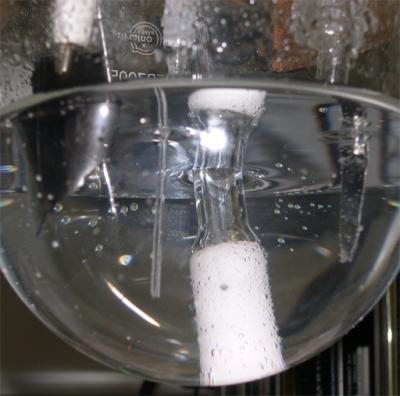Mar 11 2013
Researchers from the University of Granada (UGR) have developed a new material using doped carbon that allows low-cost energy to be produced and also reduces the amount of CO2 released into the atmosphere. The recently-patented material is a gel that enables the CO2 to be turned back into hydrocarbons via electro-catalytic transformation, with great savings both in time and money
 This is the reactor used by the researchers. Credit: University of Granada
This is the reactor used by the researchers. Credit: University of Granada
At present, power stations run using renewable energies (wind, solar or wave) produce energy peaks that are wasted, since they do not coincide with the energy needs. Storing this energy in batteries for its later use would be a very costly process that requires huge amounts of very expensive pure metals, such as nickel or copper, which is why this process is currently hardly ever used.
The doped carbon gel developed by the UGR acts as a highly-dispersed (it is made up of 90% carbon and a small quantity of heavy metals) and effective electro-catalyst, which means it enables CO2 to be turned into hydrocarbons at a low cost. This new material, developed entirely at the UGR, following more than 10 years of research into carbon gels, has recently been patented by the Institution's Office for the Transfer of Research Results (OTRI).
As the project's principal researcher, Agustin F. Perez Cadenas, explains, the doped carbon gel "is not a magical solution to prevent CO2 emissions into the atmosphere and stop the contamination caused by the greenhouse effect, but it does enable them to be reduced considerably, as well as reducing energy costs". At the moment, this system is in its laboratory phase and has still not been applied in actual power stations, though the tests carried out at the UGR have led to some "highly promising" results.
The research team currently working in this line of investigation is formed by the UGR lecturers Agustin F. Perez Cadenas, Carlos Moreno Castilla, Francisco Carrasco Marin, Francisco J. Maldonado Hodar and Sergio Morales Torres, along with Maria Perez Cadenas from the UNED. Initially, there was also another collaborator, Freek Kapteijn, from the TUDelft (Netherlands).